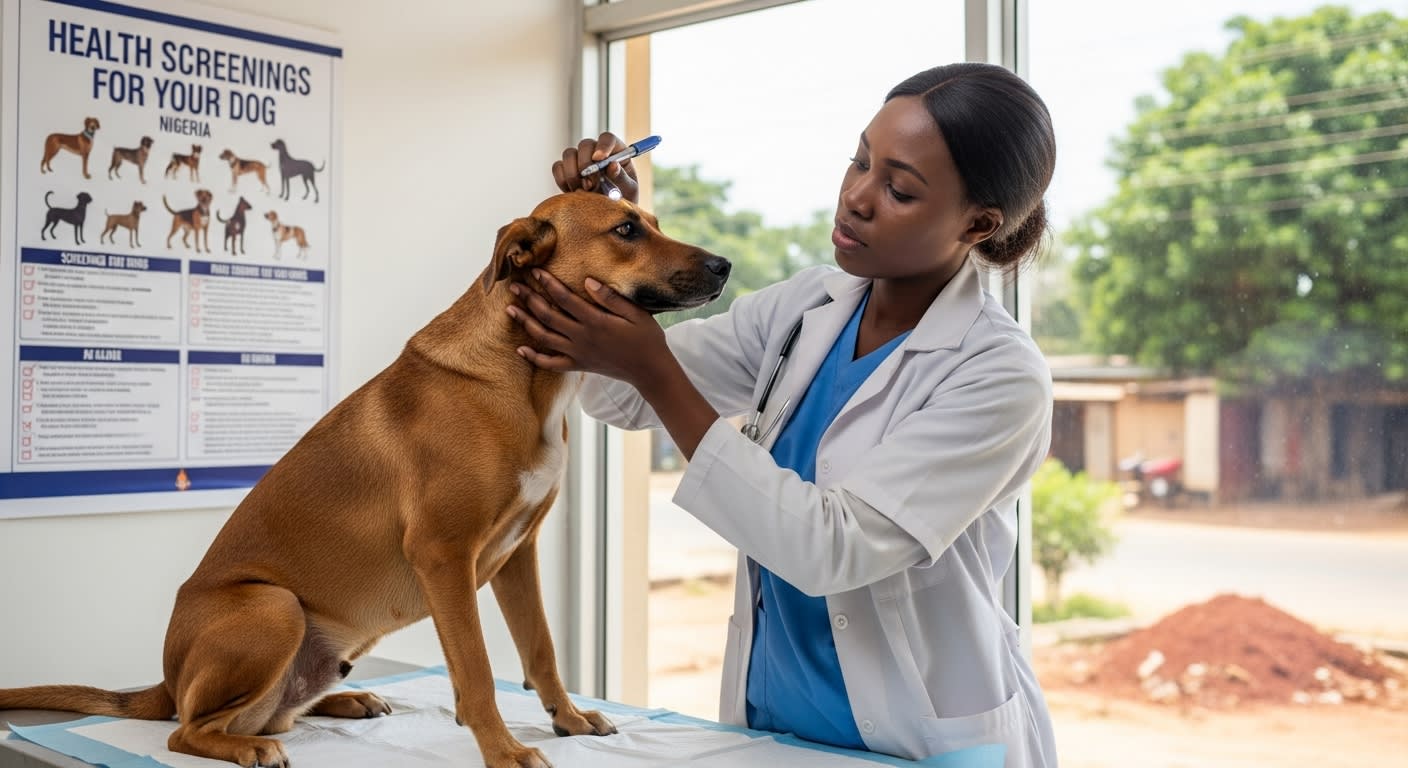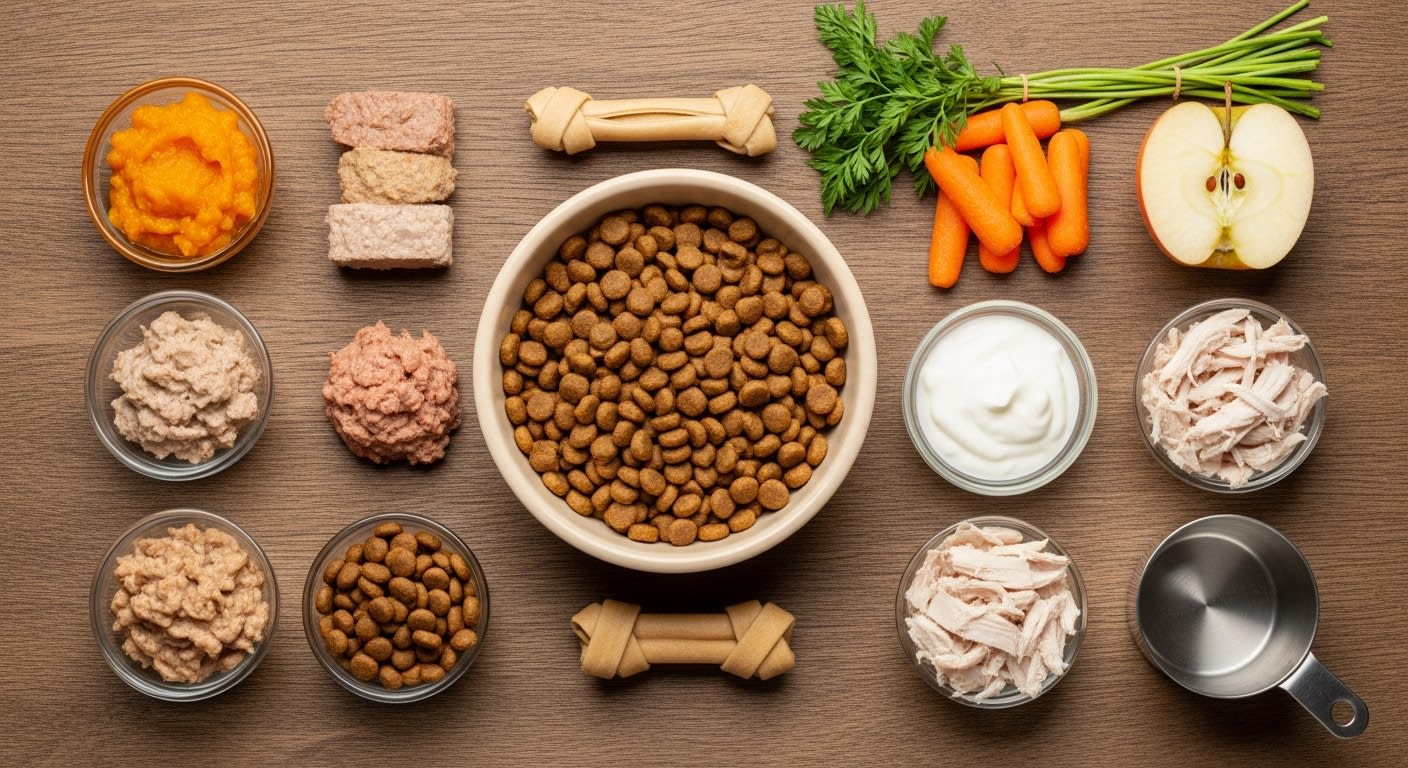Grooming your dog at home is one of the easiest ways to keep your pet healthy, comfortable, and happy, and the process becomes even simpler when you have the right guidance and tools. Because many pet parents in Nigeria are now searching for practical and affordable grooming routines, grooming your dog at home has become a common need. Moreover, with reliable online veterinary support like Mygotovet, many dog owners now feel more confident handling simple grooming tasks themselves. Since grooming helps prevent infections, improves appearance, and strengthens the human–pet bond, learning these seven steps ensures your dog receives the best possible care from the comfort of your home.
7 Steps to Grooming Your Dog at Home
1. Brush the Coat Thoroughly
Brushing is one of the most important steps in grooming your dog at home because it removes tangles, dirt, and loose fur before they turn into painful mats. When you choose the right brush for your dog’s coat type, the process becomes even smoother. For instance, a slicker brush works well for long or curly coats, while a rubber curry brush is perfect for short-haired breeds.
Additionally, brushing helps distribute natural oils across the coat, making it shiny and healthy. While many dogs require daily brushing, short-haired breeds usually need it only a few times a week. Regular brushing also helps you spot skin issues, fleas, ticks, or dryness early.
2. Bathe Your Dog Safely and Gently
Bathing is essential because it removes dirt, sweat, and odors while boosting coat health. However, bathing your dog correctly makes the difference between a clean coat and irritated skin. Always choose a dog-friendly shampoo instead of human products because dogs have different skin pH levels.
Before bathing, brush thoroughly so water does not worsen existing tangles. After that, use lukewarm water and massage in the diluted shampoo gently. Although rinsing may seem simple, it is the most important part because leftover shampoo can cause itching or dryness. Rinse until the water runs clear, and then rinse once more to ensure no residue remains.
RECOMMENDED:
20 Common Dog Breeds Available In Nigeria| Personality, Prices And Breeding Tips
Cat Care For Beginners In Nigeria
How To Keep Your Cats Warm In Cold Weather
3. Trim the Nails to Improve Comfort
Nail trimming is critical because overgrown nails can cause pain, poor posture, and difficulty walking. Even though many dog owners fear cutting the quick, trimming nails gradually prevents accidents. Instead of taking off large portions at once, trim a little at a time.
If your dog becomes anxious, pause briefly and offer treats to create a positive association. A nail grinder is another excellent option because it helps shape the nail slowly while reducing the risk of cutting too deeply. Since many pet parents need real-time support during nail trims, Mygotovet can guide you virtually during the process.
4. Clean the Ears to Prevent Infections
Regular ear cleaning prevents bacteria buildup, foul odors, and painful ear infections. Because dogs with long or floppy ears tend to develop infections more easily, weekly checks are extremely important. Look for redness, discharge, or an unusual smell.
To clean safely, use a dog ear-cleaning solution and cotton pads. Gently wipe the outer ear without inserting anything deep into the canal. When you notice excessive debris or inflammation, reach out to a vet for proper guidance. You can also consult Mygotovet for expert advice before attempting to clean heavily infected ears.
5. Trim the Hair for Better Hygiene
Hair trimming is the next step in grooming your dog at home because it helps reduce shedding and keeps your dog clean. When trimming, always ensure your dog is dry, brushed, and calm. Because human clippers are not strong enough for thick dog fur, pet clippers work better and deliver smoother results.
Trim in the direction of hair growth and use long, gentle strokes. Sensitive areas such as the paws, tail base, and face require extra caution. Although beginners can handle simple trims, complex grooming styles should be left to professionals, especially for breeds like Poodles and Shih Tzus.
6. Brush the Teeth for Excellent Oral Health
Dental hygiene plays a major role in your dog’s overall well-being. Because plaque buildup can cause gum disease, bad breath, and tooth loss, brushing at least 2–3 times a week is highly recommended. Use only dog-safe toothpaste, as human toothpaste contains ingredients that can be harmful.
Although dental chews can support oral hygiene, they do not replace proper brushing. Start slowly and reward your dog after each session so they become more comfortable with the routine. For persistent gum issues, virtual vet experts at Mygotovet can offer step-by-step guidance.
7. Finish With Final Grooming Touches
After completing the main grooming tasks, add the final touches that help your dog look and feel amazing. Dry the coat thoroughly using a towel or a dryer set to low heat. Then, brush again to restore fluffiness and ensure the coat falls smoothly.
Trim any stray hairs, clean around the eyes, check the paw pads, and ensure your dog feels relaxed. Because grooming is a bonding moment, offering praise and gentle treats helps your dog enjoy grooming sessions more over time.
Common Grooming Mistakes to Avoid
Many dog owners unknowingly make grooming errors that can cause discomfort. These include using human shampoo, trimming wet hair, cutting nails too short, and skipping regular brushing. Instead of rushing through the process, take your time and follow each of the steps carefully. When uncertain, platforms like Mygotovet make it easier to receive professional guidance instantly.
When to Call a Professional Groomer
Sometimes home grooming may not be enough. Dogs with thick, matted coats, severe skin issues, or complex hairstyles need professional help. When grooming becomes overwhelming, or when your dog becomes extremely anxious, consider booking a trained groomer. Although DIY grooming saves money, professional grooming ensures safety, precision, and expert handling.
Grooming your dog at home becomes easier when you follow these seven essential steps consistently. Since grooming supports your dog’s health while strengthening your bond, committing to a routine helps your pet stay clean, confident, and comfortable. Although you can handle simple grooming tasks independently, expert support is always available when you need it.For professional guidance, live support, and veterinary advice you can trust, Mygotovet is ready to assist you. Take the next step toward better pet care, start grooming confidently and book a virtual consultation with Mygotovet today.
Frequently Asked Questions on Steps to Grooming Your Dog at Home
1. How often should I groom my dog at home?
Most dogs need grooming every 4–6 weeks, although brushing should happen more frequently. Long-haired and double-coated breeds may require daily brushing, while short-haired dogs can be brushed weekly. Regular grooming prevents mats, odors, and skin problems.
2. What tools do I need to groom my dog at home?
Basic tools include a slicker or curry brush, dog shampoo, nail clippers or a grinder, ear-cleaning solution, cotton pads, pet-safe clippers, blunt-tip scissors, and a dog toothbrush with dog-safe toothpaste.
3. Can I use human shampoo on my dog?
No. Human shampoo disrupts your dog’s natural skin pH and can cause irritation, dryness, or dandruff. Always choose a dog-formulated shampoo, especially if your dog has sensitive skin.
4. How do I safely trim my dog’s nails without hurting them?
Trim only small portions at a time and stop immediately if you see a dark dot (the quick). Using good lighting and a grinder makes it easier to avoid injuries. If bleeding occurs, apply styptic powder.
5. How often should my dog get a bath?
Most dogs need a bath every 3–6 weeks depending on their coat, lifestyle, and odor. Dogs with skin allergies or medical issues may require a customized schedule from a veterinarian.
6. How do I know if my dog’s ears need cleaning?
Check the ears weekly. If you notice a bad smell, redness, brown discharge, excessive scratching, or head shaking, the ears need cleaning. If symptoms persist, consult a vet immediately.
7. Are home grooming sessions safe for all dogs?
Yes, home grooming is safe for most dogs, but it depends on their coat type, temperament, and health. Dogs with severe matting, anxiety, or medical conditions may require professional grooming or veterinary assistance.
8. What should I do if my dog becomes stressed during grooming?
Take short breaks, offer treats, and use calm verbal reassurance. Starting grooming when your dog is tired after exercise can also help. Never force grooming; instead, slow down and create a positive experience.
9. How can I groom a dog with a double coat?
Use an undercoat rake or deshedding tool before and after baths. Never shave a double-coated dog unless medically necessary, as it can damage coat growth and reduce heat protection.
10. When should I call a professional groomer instead of grooming at home?
Seek a groomer when your dog has severe matting, needs a breed-specific haircut, reacts aggressively during grooming, or has skin conditions requiring expert handling.


